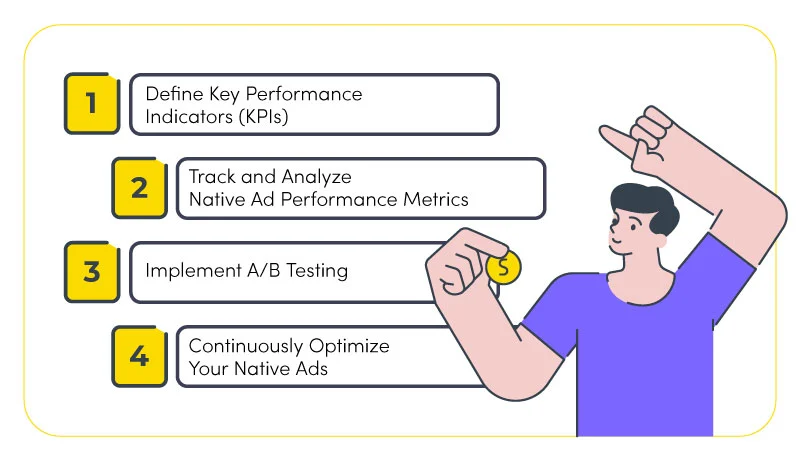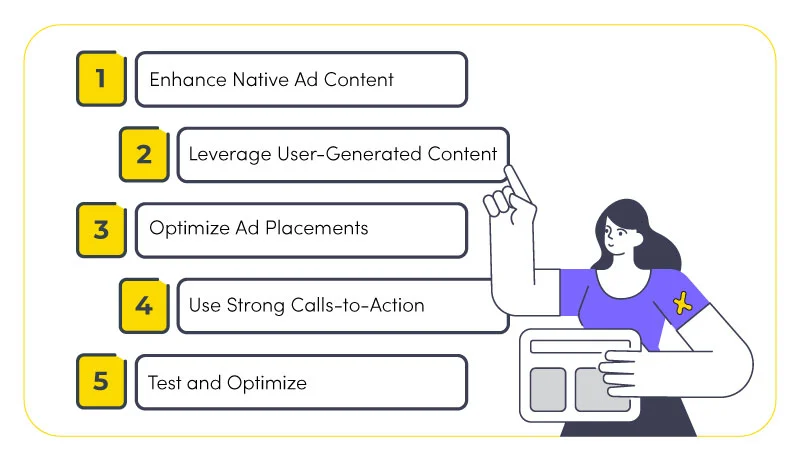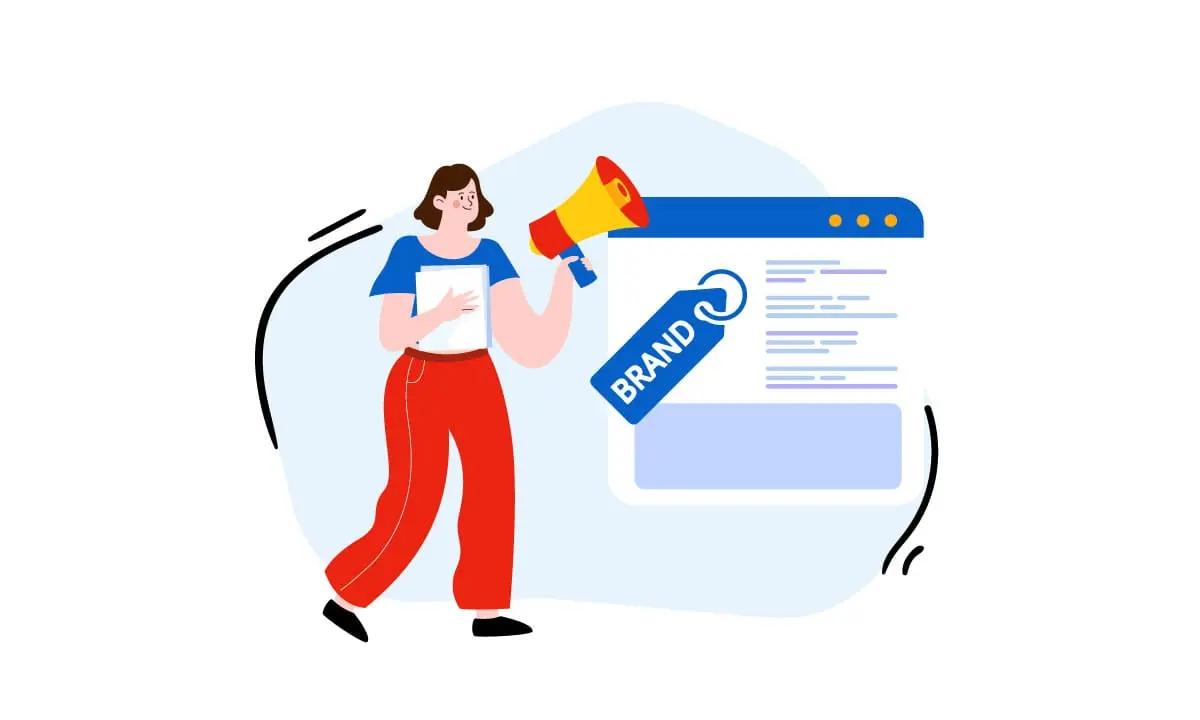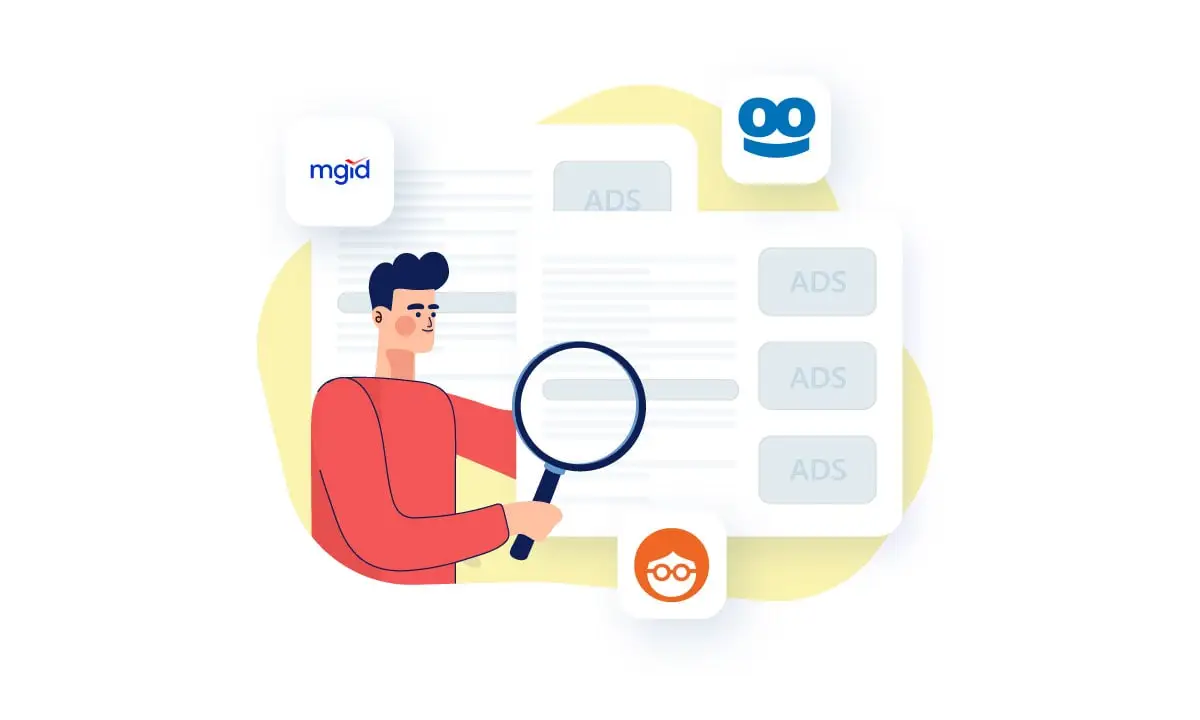Are you struggling to make your native ads stand out from the competition? With so much noise in the advertising world, it can be challenging to capture the attention of your target audience. But fear not, because there is a solution: native ads optimization. By fine-tuning your native ads, you can boost their performance, increase engagement, and drive more conversions.

In this article, we’ll dive into the world of native ads optimization and explore techniques, strategies, and best practices to help you achieve your advertising goals. So buckle up and get ready to optimize your way to success!
Native Ads Optimization Techniques
If you’re looking to optimize your native ads, you need to know how to measure their performance. Understanding the metrics that matter is key to unlocking the full potential of your campaigns. By knowing how to measure native advertising performance, you can identify areas for improvement, adjust your strategies, and drive better results. Here are some effective techniques to help you do just that:
- Define Key Performance Indicators (KPIs): Start by establishing KPIs that align with your advertising goals. For example, if your goal is to increase brand awareness, you might track metrics such as impressions, reach, and engagement. If your goal is to drive conversions, you might focus on metrics such as click-through rates and conversion rates.
- Track and Analyze Native Ad Performance Metrics: Once you’ve identified your KPIs, it’s essential to track and analyze your campaign’s performance. Native ad platforms provide a wealth of data, including impressions, clicks, and conversions. By analyzing these metrics, you can identify patterns and trends and adjust your campaigns accordingly.

- Implement A/B Testing: A/B testing is a powerful tool for optimizing your native ads. By creating multiple versions of your ad and testing them against each other, you can determine which elements are most effective and refine your campaigns accordingly.
- Continuously Optimize Your Native Ads: Native advertising is an ongoing process, and continuous optimization is key to success. Use the data you collect to refine your campaigns, adjust your targeting and messaging, and experiment with new formats and platforms.
By implementing these techniques and measuring your native advertising performance, you can achieve your advertising goals and drive better results. So, start measuring and optimizing your native ads today to take your campaigns to the next level!
Improving Native Ad Performance
Creating a successful native advertising campaign requires careful planning, execution, and optimization. If your campaigns aren’t performing as well as you’d like, there are several factors to consider. By understanding these factors and implementing effective strategies, you can improve your native ad performance and drive better results. Here are some tips on how to create a successful native advertising campaign:
- Identify Your Target Audience: One of the most critical factors in a successful native advertising campaign is targeting the right audience. You need to know who your target audience is, what their interests are, and where they spend their time online. This information will help you create ads that resonate with your audience and increase engagement.
- Optimize Your Native Ad Design: The design of your native ads plays a significant role in their performance. You need to create ads that are visually appealing, easy to read, and relevant to your audience. Use high-quality images, clear headlines, and concise copy to make your ads stand out.

- Test Different Ad Formats: Native advertising offers a range of ad formats, including in-feed ads, sponsored content, and recommendation widgets. Test different formats to see which ones perform best for your campaign and optimize accordingly.
- Refine Your Targeting: As you collect data on your campaign’s performance, use it to refine your targeting. Adjust your audience targeting, ad placements, and messaging to improve engagement and drive better results.
By implementing these strategies and continuously optimizing your campaigns, you can create a successful native advertising campaign that resonates with your audience and drives the results you need. So, start improving your native ad performance today and take your campaigns to the next level!
Native Ad Performance Metrics
Native ad performance metrics are essential for measuring the success of your campaigns. By tracking key performance indicators (KPIs), you can identify areas for improvement, adjust your strategies, and drive better results. Here are some of the most important native ad performance metrics to consider:
- Click-Through Rate (CTR): The CTR measures the number of clicks your ad receives relative to the number of impressions it generates. A higher CTR indicates that your ad is resonating with your audience and driving engagement.
- Conversion Rate: The conversion rate measures the percentage of users who complete a desired action, such as making a purchase or filling out a form, after clicking on your ad. A higher conversion rate indicates that your ad is driving the desired results and delivering a strong return on investment (ROI).
- Engagement: Engagement metrics, such as likes, shares, and comments, indicate how users are interacting with your ad. Higher engagement rates indicate that your ad is resonating with your audience and driving conversation.

- Cost Per Click (CPC): The CPC measures how much it costs to generate a single click on your ad. Lower CPCs indicate that your ad is performing well and delivering strong ROI.
- Return on Investment (ROI): The ROI measures the revenue generated from your ad campaign relative to the cost of running the campaign. A higher ROI indicates that your ad is delivering strong results and driving revenue for your business.
By tracking these native ad performance metrics, you can identify areas for improvement, optimize your campaigns, and drive better results. Use these metrics to measure the success of your campaigns, adjust your strategies, and achieve your advertising goals.
Native Ad Engagement Optimization
Native advertising best practices are crucial for optimizing engagement with your ads. By implementing these best practices, you can increase engagement rates and drive better results for your campaigns. Here are some tips on how to optimize engagement with your native ads:
- Enhance Native Ad Content: One of the most important native advertising best practices is to create engaging, high-quality content that resonates with your audience. Use clear headlines, concise copy, and eye-catching visuals to make your ads stand out and capture your audience’s attention.
- Leverage User-Generated Content: User-generated content, such as customer reviews and social media posts, can be a powerful tool for driving engagement with your native ads. Incorporate user-generated content into your ads to build trust and credibility with your audience and encourage interaction.
- Optimize Ad Placements: Ad placement plays a significant role in native ad engagement rates. Place your ads in locations where your audience is most likely to see them and interact with them. Test different ad placements to see which ones perform best and optimize accordingly.

- Use Strong Calls-to-Action: Calls-to-action (CTAs) are essential for driving engagement and encouraging users to take action. Use clear, concise language and visually appealing buttons to make your CTAs stand out and encourage users to click.
- Test and Optimize: Finally, one of the most important native advertising best practices is to continuously test and optimize your campaigns. Use data and analytics to identify areas for improvement, adjust your strategies, and optimize your campaigns for maximum engagement.
By incorporating these native advertising best practices, you can optimize engagement with your ads, increase interaction with your audience, and drive better results for your campaigns. Remember to continuously test and optimize your campaigns using data and analytics to identify areas for improvement. By doing so, you can stay ahead of the competition, achieve your advertising goals, and deliver a positive ROI for your business.
Native Ad Conversion Rate Optimization
Native ad conversion rate optimization is critical for driving results and maximizing ROI on your advertising spend. By implementing effective strategies to increase your conversion rates, you can turn more of your ad clicks into valuable actions, such as sign-ups, downloads, purchases, and more. Here are some tips on how to optimize your native ads for higher conversion rates:
- Create Effective Calls-to-Action (CTAs): Your CTAs should be clear, concise, and visually appealing. Use action-oriented language and strong visuals to make your CTAs stand out and encourage users to take the desired action.
- A/B Test for Native Ad Optimization: A/B testing is a powerful tool for optimizing your native ads for higher conversion rates. Test different ad copy, visuals, CTAs, and landing pages to see which variations perform best and optimize accordingly.
- Optimize Landing Pages: Your landing pages should be optimized for conversion and aligned with your ad content. Ensure that your landing pages load quickly, have clear messaging, and a straightforward user flow to drive users to take the desired action.

- Use Retargeting Ads: Retargeting ads can be an effective way to reach users who have already interacted with your brand and are more likely to convert. Use retargeting ads to drive users back to your website and encourage them to take the desired action.
- Personalize Your Ads: Personalization can be a powerful tool for driving conversions. Use data to personalize your ads and landing pages to the user’s interests, location, or other relevant factors to increase engagement and conversions.
Implementing these strategies will help you optimize your native ads for higher conversion rates, drive more valuable actions from your ad clicks, and achieve better ROI on your advertising spend.
Best Practices for Native Ads Optimization
Native advertising has become an increasingly popular advertising format due to its effectiveness in reaching and engaging audiences. However, with the growing popularity of native ads, it’s essential to stay ahead of the competition by implementing best practices for native ads optimization. Here are some key dos and don’ts to keep in mind:
Dos:
- Conduct Competitor Research: Use native ads spy tool to research your competitors’ native ad campaigns and gain insights into what’s working and what’s not. This can help you identify opportunities for improvement and stay ahead of the competition.
- Adhere to Advertising Policies and Guidelines: Ensure that your native ads comply with relevant advertising policies and guidelines, such as those set by the Federal Trade Commission (FTC). Non-compliance can result in penalties, legal issues, and damage to your brand’s reputation.
- Continuously Test and Optimize: Test different variations of your native ads, such as ad copy, visuals, and CTAs, to identify what’s working and optimize for better performance. Continuously testing and optimizing can help you achieve better results and ROI over time.

Don’ts:
- Mislead Your Audience: Native ads should be transparent and clearly labeled as sponsored content. Avoid misleading your audience with false claims, deceptive advertising practices, or clickbait headlines.
- Ignore Metrics: Metrics such as click-through rates, conversion rates, and engagement rates are crucial for measuring the performance of your native ad campaigns. Ignoring metrics can result in missed opportunities for improvement and subpar results.
- Neglect Targeting: Targeting is critical for reaching the right audience and driving engagement. Neglecting targeting can result in wasted ad spend and poor performance.
By following these dos and don’ts, you can optimize your native ads for better results, avoid common pitfalls, and stay ahead of the competition. Remember to use native ads spy tools to research your competitors, adhere to advertising policies and guidelines, and continuously test and optimize your campaigns for optimal performance.
Conclusion
Native ads optimization is a crucial process that can help you achieve better results and ROI from your native ad campaigns. By implementing the right techniques, improving ad performance, tracking performance metrics, optimizing for engagement and conversion rates, and adhering to best practices, you can create effective native ad campaigns that resonate with your target audience and drive results. As native advertising continues to evolve, it’s essential to stay up to date with the latest trends and strategies to maintain a competitive edge. By prioritizing native ads optimization, you can maximize the potential of this powerful advertising format and achieve your marketing goals.
FAQs
How can I optimize native ad placements on my website?
You can optimize native ad placements on your website by strategically placing them in locations where they are most visible and relevant to your audience, and testing different placements to identify what works best for your specific site.
What are some best practices for designing effective native ads?
Some best practices for designing effective native ads include creating attention-grabbing headlines, using high-quality visuals, keeping the ad design consistent with your brand, and ensuring that the ad content is relevant to your target audience.
How can I improve the engagement of my native ads?
To improve the engagement of your native ads, you can try enhancing the ad content, leveraging user-generated content, and testing different variations of ad copy, visuals, and CTAs to identify what resonates best with your audience.
What are some common mistakes to avoid when optimizing native ads?
Common mistakes to avoid when optimizing native ads include misleading your audience, neglecting targeting, ignoring metrics, failing to test and optimize, and ignoring advertising policies and guidelines.







 Facebook Ads Spy Tool
Facebook Ads Spy Tool TikTok Ads Spy Tool
TikTok Ads Spy Tool